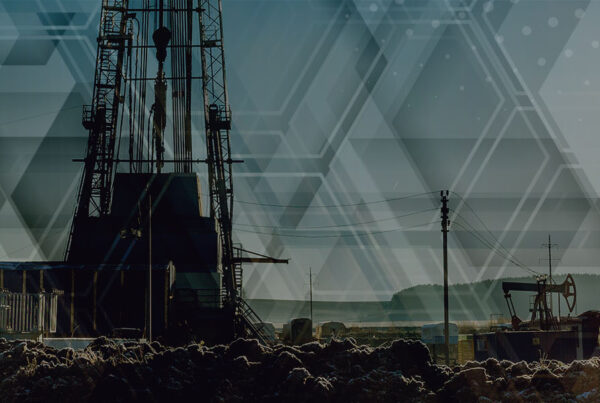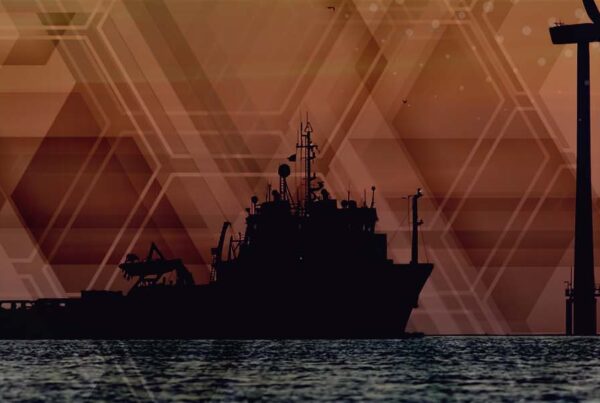Energy Transition Now - Episode 9 with Duncan McLachlan & Safina Jivraj
The second series opens with Duncan McLachlan and Safina Jivraj from project architects and system integrators io consulting. We discuss how you design or adapt projects to make them compatible with a lower carbon future.
Duncan and Safina highlight the net-zero commitments io consulting have made and the impact this has on the work they do. We discuss the options and limitations for greenfield and brownfield projects in targeting net-zero – including having the right mindset in your approach, as well as the need to collaborate to realise the opportunity. Duncan and Safina also delve into practical examples in the hydrocarbon and hard-to-abate sectors, explaining why taking a systems thinking approach is so critical for success and in managing the complexity, while avoiding unintended consequences.
About Duncan & Safina
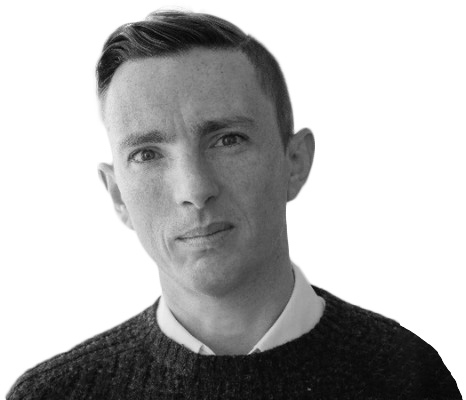
A physicist and systems thinker with 20 years of experience leading successful innovation teams across the automotive, defence and energy sectors, Duncan McLachlan is currently Director of Systems Engineering at io consulting, where he deploys model based systems engineering (MBSE) techniques to facilitate the digital and energy transition.

Safina is the Technical Director for Environmental Consulting Services at io consulting. She holds a Masters degree from Imperial College in Environmental Engineering and has accumulated 25 years’ experience in the Oil and gas, refining and energy sector. Whilst at io, she has expanded into energy transition where she is a segment lead for emissions reduction and decarbonisation, assisting clients to identify plausible yet ambitious carbon reduction pathways in design and on existing operating facilities.
David Linden: Hello everyone, I’m your host, David Linden, the head of energy transition for the Westwood Global Energy Group, and you’re listening to Energy Transition Now where we discuss what the transition really means for the oil and gas and the broader energy industry. After the summer break, at least here in the northern hemisphere, we’re now back with today’s episode officially kicking off series two. After speaking with mostly operators in our first series, this second series, will take a look at the technologies and finance needed to make the transition a reality. The topics reflect the feedback we received from our energy transition survey, so thank you for taking part and I hope everyone enjoys what comes next. To get the ball rolling, we wanted to take a closer look at how you design or adapt projects to make them compatible with a low carbon future or a lower carbon future. And to help us with that, we have our first dynamic duo, Duncan Mclachlan and Safina Jivraj from the self-styled project architects and system integrators, io consulting. Safina is the technical director for Environmental Consulting Services at io consulting. She holds a master’s degree from Imperial College in Environmental Engineering and has accumulated twenty-five years of experience in the oil and gas refining and energy sector. While at io, she has expanded into energy transition where she is a segment lead for emissions reduction and decarbonisation. Duncan is a physicist and systems thinker, with 20 years of experience leading successful innovation teams across the automotive, defence and energy sectors. He is currently the director of systems engineering at IO Consulting, where he deploys model-based systems engineering (MBSE) techniques to facilitate the digital and energy transition. A warm welcome to you both.
Duncan Mclachlan: Thanks, David. Good to be here.
David Linden: Fantastic. All right, well, I think before we begin with the topic of today, we will be looking at how you design and try and at least adapt your projects for a low carbon future. I think it would be helpful for listeners to understand a little bit more about io consulting. They might not all be familiar with you. So, Duncan, maybe if I could just ask you sort of the opening question, who is io consulting?
Duncan Mclachlan: It was great to hear you say in the introduction that we consider ourselves a project architect or a systems integrator, because that fundamentally sums-up what we do. We were formed in 2015 as a joint venture between Baker Hughes and McDermott to bring more certainty to the front-end of projects. And that’s what that project architect piece comes in. We currently have about a 50/50 split in our work between hydrocarbon projects and the energy transition projects. And we work with a decision quality framework, which is designed to mitigate cognitive bias, which is where we start to bring in this more certainty piece. And we also use a holistic systems approach to our project that allows us to both create and maximise value in the early concept phase, but then protect it through the later phases of the project. And we do this without a multidisciplinary team at io consulting, and we supplement that with the expert knowledge from both of our parent companies.
David Linden: Very interesting. We’ll certainly come back to, I think, some of that that systems thinking a little bit later, because I think that’s going to be quite important as to how we think about some of this. But as you sort of say, half your projects are sort of energy transition focussed, and I’m assuming part of the hydrocarbon ones are also about how you think about the future and how to how to think appropriately about those. And I recall, you know, you’ve made some net-zero pledges, you’ve talked about energy transition a lot, etc., which is one of the reasons I was keen to bring you on. But maybe Safina, can you just talk us a little bit more around how is net-zero as a concept actually ingrained within the io consulting business?
Safina Jivraj: Yeah, certainly. I mean, to start it’s front, back and centre. You know, we’re very serious about energy transition and net-zero. There is this recognition within io that we coexist within a system, the system being the globe. And, you know, it’s not possible to shift one piece, you know, at a time. And we have to work together, industry and individuals. Recently, we read a book by Mike Berners-Lee, which is called “How Bad Are Bananas?” And it starts to talk about, you know, how individual choices or people’s choices have an impact on carbon and people’s carbon footprint and became very apparent that, you know, we all have a part to play in decarbonisation to protect the future, you know, protect the wealth of future generations. So, you know, we started by taking approach of having skin in the game. And our mindset has really been about, you know, we can’t really sell energy transition to the industry without making commitments within io itself. So we have gone through a process of understanding what our carbon footprint is. And we’ve gone and we’ve aligned with the science-based target initiative in setting our ambitions and targets. So it became really clear at the beginning that when we were setting our targets that we don’t have scope one and scope two emissions. And, you know, sometimes it would have been very tempting to stop there, but we took it a step further, and you know, our pledge is now based around ambition three, which is the most stringent of the ambitions. Which if those that aren’t familiar, it limits global warming to well below one point five degrees above pre-industrial levels. So this is just for scope three. And so there’s going to be quite a degree, a shift change within our operations to be able to accommodate that. But what it really translates to is a 50 percent reduction in scope three emissions by 2030. And I think this commitment to net-zero within our operations has been really welcomed by our clients. So I think it’s all been quite positive
David Linden: Perfect Safina, and maybe just as a quick follow-up question to that, in terms of your commitment there, does that mean your client base changes as well or not really, is it you are working together with your client base to ensure that they also ultimately – because they are your scope three – so is the client base changing or is it what you’re doing with your client base is changing?
Safina Jivraj: I think a bit of both. So, you know, our client base is changing. You know, we’re we’re starting to work with industries that are not predominantly oil and gas. So that’s interesting. But we’re also working with our parents. I don’t know whether it was mentioned in the intro that io is part owned by Baker Hughes and McDermott. And we’ve been working really close with both entities on decarbonising what we call embedded carbon in the process, through looking at how can equipment be manufactured at low carbon and also looking at the EPC, the engineering process, and you know, how we can improve that process to reduce carbon in their footprint as well. So I think the nature of the business is changing. We all have to work together, as I said.
David Linden: Safina, thank you, no, certainly I mean, Baker Hughes and McDermott are also known for making their own commitments and leaps and bounds in that space. Now, Duncan, let me come to you, though in terms of, you know, we talked about and the idea of the topic for today being working out, how do you design for a lower carbon future as such? And of course, maybe a good starting point is to talk about new things, new things that you’re going to build, that you are going to design and put out there. With that sort of topic in mind, how do you work with your clients when you’re thinking about net-zero facilities?
Duncan Mclachlan: Yeah, I think I mean, I think that concept of new facilities is really important with regards to the pledges that the oil and gas operators have made, whether it’s 2030, 2040, 2050, in 2050, the assets we’re building today are still going to be operating. You know, it falls within that lifetime. So what we’re doing today has to be aimed towards net-zero to help our clients meet those objectives and those commitments. And as part of that, in 2020, we led a collaboration between McDermott, Schnieder Electric and io to develop the concept for a net-zero offshore facility. We selected a reference case of a gas compression facility. We chose one that was fairly, standard in terms of its basis of design. And we set out to see how we would redesign that as a net-zero facility and we successfully achieved that. A 76 percent reduction in the operational emissions. The net-zero element came from an offset. For the sake of the study, we constrained ourselves to engineered offsetting solutions only. So we’ve looked at some direct air capture there, and that was only for a two percent increase in the total cost of the facility. So relatively small increase in cost to achieve a massive difference in the emissions footprint of that facility.
David Linden: Very interesting indeed. And if I listen to you there, are you suggesting also, though, that for greenfield, what you need to do is almost go back to first principles when you’re looking at something you chose an example there around the gas compressor, let’s say at an LNG facility or another platform or anything like that. Each time you need to go back to first principles and have that mindset of how do I actually achieve this here and balance it between different factors at play.
Duncan Mclachlan: Absolutely. One of the key takeaways that we had, we applied it to a specific concept, but the methodology can be extrapolated out and that idea of first principles is key to it all. So when we traditionally approach a study for our clients, we’ll work with them to identify the value drivers, what good looks like. And more often than not, those are economic metrics. It’s minimise the capex, it’s how do we maximise [00:11:17]NPV, [0.0s] those type of things. For this study, this net-zero study, we constrained ourselves only to focus on the reduction of emissions. And it was very interesting as we are going through our workshop sessions and we were coming up with ideas and someone might say, “Yeah, but that’s going to put a lot of cost into it”. And then everyone else would jump on them and say, “we’re not thinking about cost in this. We’ve got to focus on emissions”. Was absolutely changing the mindset and it was taking it right back to first principles, and it was a pleasant, I wouldn’t say surprise that’s too strong, but really pleasant to find that there was a fairly insignificant increase in the cost. And we purely focussed on emissions reduction to achieve that.
David Linden: Fascinating. Yeah, it would still be a case by case basis, but fascinating anyway. But I guess the biggest problem, I guess, is the word that’s out there is obviously 99 percent of things are brownfield, not greenfield, though. And so the biggest challenge right now, certainly for the oil and gas industry, but also broader, is how do you actually approach or think about brownfields or operating assets? What’s got to be different there?
Safina Jivraj: Shall I take this one, Duncan?
Duncan Mclachlan: Yeah, yeah.
Safina Jivraj: OK, so, I mean, there’s two factors at play. I mean, so reading all the IEA reports, you know, there’s going to be a need for oil and gas well beyond 2040. And, you know, most existing operations their design life, that, you know, the clients that who are speaking to us, the design life of operations go beyond 2030. And so we were being asked, you know, what do we do in this early transition space, you know, to support brownfield operations? Because, you know, they’re not just going to shut the doors because of carbon, you know, climate change impacts. So we devised a methodology called the Emissions Reduction Sprint, that really takes a deep dive into each asset and to identify and explore emissions pathways of a facility during its operating life. Now, you know, there are the sprint itself has six components. The components start with, you know, the framing to understand, you know, what the value drivers are. As Duncan said, it forms very similar in a similar process to the decision quality matrix that we or the decision quality process that we apply for our concept design projects. But it starts by framing, understanding what the boundaries of the review is. And then looks at baselining and then we start to identify what the pathways look like. The next step is then looking at screening, you know, based on the value drivers to look at technical viability of the solution, looking at the technical readiness levels of the solutions that we’re proposing, but also looking at business continuity. You know, one of our clients quite recently was saying that, “look, we have a need to change our kit today. You know, this is ageing equipment. Do we change it like for like do we start to consider, you know, 2030 considerations or do we start to look at, you know, what does the net-zero pathway look like?”. So there are some challenges around that because, you know, it’s a time constraint issue, and there is a cost issue, you know, it is more complicated to do brownfield modification. You have to fit it within a window for plant shutdowns, planned plant shutdowns. There is constraint, you know, space constraint issues, changing people’s mindsets, operations mindsets as well, you know, they’ve been doing things a certain way and they may not be open to changing the way the plant has operated. There’s also issues around, you know, feasibility. You know, one of the things that we looked at with greenfield is that, you know, there is this opportunity to electrify, you know, when you have compressors, boilers, turbines, power generation equipment on site that predominantly runs on hydrocarbons, it makes it very difficult and costly to look at, you know, re-revisiting all of that design and looking at applying, you know, electrification processes as well. So I think, you know, there is also this consideration of how feasible, you know, is the whole process, it makes it more difficult, I think, for brownfield than greenfield. With greenfield, you’ve pretty much got a blank sheet to work with. Brownfield, it’s a more involved process.
David Linden: Okay. And it sounds like it’s rather complex because, you know, as you say this about technical feasibility, it’s about cost. It’s about, you know, is there some government support maybe that’s out there to help you choose a certain pathway above another. And therefore, the decision-making is quite complex. But kind of listening to you, you need to come in with that mindset straight away and look at all your different options and roll those out. So is it therefore fair to say it’s really quite specific by geography, by the age of the infrastructure that you’re looking at, by the owner, et cetera, is really those are some of the factors that are going to drive ultimately what you can and cannot do?
Safina Jivraj: Yeah, and you know, this methodology that we have, we can apply it to a single asset or look at a portfolio of assets. So, you know, there may be more opportunity in the portfolio to look at, you know, certain assets and look at reductions on certain assets, whereas others in the portfolio might be brand new. And, you know, when you look at energy efficiency, that might be, you know, right at the top of the curve, you know, they may not be as many opportunities there as some of the older assets or mid-ranging assets. So I think that you have to go in there with the mindset. You have to go in there with the mindset of looking at technical readiness of solutions, because I think, you know, that the industry is very risk-averse generally. So to then look at changing operations to operations that, you know, people just aren’t familiar with, you know, and getting people behind that, I think becomes a challenge that we will have to look at. Also, you know, once you have operating facilities, what’s been interesting for us is when you design something and when you actually go to operate it, the actual conditions for operation might be different. So the plant may not be operating at its optimal. So there are opportunities there, as you know, Duncan said about compression that could be a re-wheeling or re-bundling of compression to optimise the plant. There could be opportunities of, you know, questioning “Why are we flaring and why are we venting? Is there another opportunity there?”. You know, decisions on selecting valves and equipment that, you know, are kind of leaky, you know, that’s perhaps been made on, you know, [00:18:55]a ALARP and what’s what’s tolerable [1.2s] and the cost, you know, basis. But now we’re really challenging ourselves to say, can we put in better items of equipment to manage fugitive emissions and manage the leakiness at the site? Because ultimately, if a facility leaks less, it’s more revenue to the operator so that there is a benefit there. Certainly.
David Linden: OK, yeah, obviously that always is a nice, nice cherry on top that people will also be looking for increased profitability as well as improved emissions.
Safina Jivraj: And I think one more thing to add there is that, you know, what we’re also finding is that there are some solutions that, you know, where operators are quite single-minded in the way they perhaps deliver a solution or operate their site. They’re quite protective of their facilities from a security perspective. You know, some of the solutions that we’re looking at, like CCUS, it has to be a collaborative effort to make some of these solutions viable. So, you know, we’re seeing far more engagement, you know, within seeing in the UK with Teeside, you know, and net-zero Teeside and other regions around the UK where industries coming together, you know, to meet that low carbon pursuit. So it’s quite exciting. You know, we’re working in a very different way to how we used to.
David Linden: Perfect, no, I like it. I like it. Certainly collaboration and engagement is something that we try and talk about a lot as well. And I did want to ask just in terms of if someone was to visualise this in their mind, I can see that in a greenfield situation, you can start and go, right “I want to get this facility as close to net-zero as I possibly can. I might need to mop up some of the rest of it with some carbon capture or offsets”, whichever methodology you wish to wish to use. But you can achieve quite significant carbon reductions. From your experience, is it fair to say that brownfield, you’re only ever going to get to a certain percentage because of just the way it’s been designed from day one? So you’re not going to get a net-zero – let’s call it – facility or not so close to, because there are just simply fewer things you could do because the day one design hasn’t been appropriate. And I ask the question with a kind of macro kind of hat on here, thinking, OK, if the world, you know, wants to get to net-zero. But actually a lot of it’s been designed not with net-zero in mind in the first place. How far can you really go before you need to do other things?
Safina Jivraj: I guess it’s about mindset, you know, and there is certainly some truth in what you’ve said, you know, that there is a facility can only really be optimal at its design, you know, so that there is that aspect of it. So, you know, you can remove you can do energy efficiency. You can look at changing out items of equipment. It’s about how much money and capital is available to make these changes. But also, we have to look [00:22:08]at tail gas treatment. [0.6s] You know, there is the opportunity for carbon capture. There is the opportunity for indirect or direct capture solutions. So I think it’s about how willing a operator is towards greening or, you know, getting to a net-zero solution. And I think there is also funding available from government to, you know, which challenges the mindset as well, that, you know, it might not be viable, commercially viable to go down a certain route. But, you know, if there is demonstration that, you know, there is a carbon reduction through changing the design, there are grants available by government to enable the process. Don’t know Duncan, whether you want to say anything?
Duncan Mclachlan: Well, to echo what you said on the mindset and just try to draw on an experience I had from working in the automotive industry early in my career. So it was a manufacturing industry, we were launching some of the world’s first electric steering systems. We had an experience where we had two clients, one client set us a target of a failure rate of 30 parts per million. And then we had another client that said us a target of zero parts per million, your target failure rate was zero. And after much wailing and gnashing of teeth about how we would never be able to do it, and the design had to have some level of failure on the client who set the target of zero, we achieved the sub-five parts per million failure rate. So that’s a pretty pretty darn good the client set as the target of 30, I seem to recall, I think we’ve got to the 20 parts per million. And that mindset of if you set a target of zero, you’re going to get a lot closer to it than if you set a target of thirty. And I think that mindset is really important because it really forces you to push the boundaries in terms of what you can do.
David Linden: Yeah, no, certainly other industries maybe of the food and beverage industry will say that talk with their supply chains a lot and work very closely with them. You see that attitude, there, around “Let’s work together, let’s get the right KPI’s in place, let’s agree on those stretch targets and we’ll work together to try and make them, achievable as such”. But I guess, you know, as you were saying there, we’ve talked about some of the things that can sort of facilitate getting to net-zero a little bit more. We talk about funding, the willingness, the mindset, collaboration, all those different things. But of course, what we’re trying to do is not just change oil and gas, also trying to change or adapt the whole economy as such. And you know, Duncan, you talked a little bit about the automotive sector and the mindset there and how that mindset translates. But how does some of the work that you’re doing, apply to maybe other hard to abate sectors and the sort of mindset or the approach that you take. How does it apply there?
Safina Jivraj: Well, certainly we’re all running at the same pace. You know, it’s not just the oil and gas sector that is looking to decarbonise, you know, along with the oil and gas centre. You know, there’s the power industry, the steel manufacturing industry, the cement manufacturing, mining. You know, we’re all challenged to look at, you know, how can we reduce carbon from our facilities. One of the clients that I’m working with, they’re really looking at, you know, what can they do now? And part of what they can do now is they’ve set ambitious targets for decarbonisation. And they’re looking at, you know, is fuel substitution an option for them, you know, moving into the hydrogen space? Is electrification an option for them that we’re all working together and learning from each other about, you know, how to pursue this, how to decarbonise our various sectors. You know, one of the things that one of our clients are looking at is if we change out all of our kilns heaters to electrical fired heaters, what does that what impact does that have from heat distribution perspective? You know, it’s understanding the feasibility, but also if there are able to do that, you know, what power purchase agreements can they put in place? So they just ensure that they take the renewable portion of the power purchase, you know, the power from the grid. So it means that, you know, that greening their facilities and shifting, I think emissions from scope one into scope two means as the power sector greens, then the industry takes advantage of that as well. So that’s just one area that, you know, is being looked at, I think, by the hard to abate and where there are no other options. You know, there are industries like [00:27:20]the steel making [0.3s] industry in Wales, you know, that they’re looking at collaborative approaches and looking at CCUS. So, yeah, I think I think we’re all moving in the same direction and we’re all trying to learn from each other because it’s just so fast-paced. You know, 2030 will just come around before we know it. And it’s we can’t just wait for someone else or another sector to take advanced steps. I mean, what we can say is that there is a lot of learnings from the oil and gas sector because we’ve been measuring carbon for not this is not just a new thing for us. But, you know, we’ve had clients ask us for carbon footprints and energy efficiency studies from the 90s. So, you know, this isn’t new for us, it’s just that it’s becoming, you know, front and centre of what we’re doing.
David Linden: Thank you. And I think as I listen to you both, as we talk through, you know, how do you get to a net-zero facility, whether it’s brownfield or greenfield? And we started to talk a little bit more about other areas of the economy that also need to adapt and change. We take some of the lessons from oil and gas and maybe even vice versa as well. And some of the learnings you’ve got there, Duncan, from the automotive industry is very interesting. But of course, to be able to understand, and make that all work, it’s pretty complex. It’s pretty complex. It’s a series of things you can do and a lot of things don’t sit in isolation. They obviously are impacted by a number of other sort of complex issues. So how do you actually think about and I think you started to mention this in your intro as well, but how do you think about some of that complexity? How do you deal with that?
Duncan Mclachlan: Yeah, I think, you know, absolutely the complexity and the climate emergency and indeed pretty much everything that we’ve discussed today is would be considered as a wicked problem. So that’s a problem that’s difficult to solve. Because the requirements are sometimes incomplete, they are sometimes contradictory, they might be competing quite often difficult to recognise. And when you have that confluence of uncertainty and complexity, there’s really one ideal solution that serves all of these competing requirements and we’re having to make trade-offs. And that’s fundamentally what we’re having to do here. You know, we have to balance the complexity, the opaque nature of some of the requirements and the ultimate goal of net-zero of addressing the climate emergency. And the way that we do that is to take a systems approach based in systems thinking and systems engineering, where we model the systems with what we would talk about precise simplicity, what we mean by that is we model it with enough detail to be insightful, but not so much that we would drown in the detail and this lets us understand the inter-dependencies between different elements of the system. If I change something over here, what does that do to the rest of my system? If I want to make know this metric over there, net-zero or zero, how does that impact the rest of my system? When we have that model and we understand the inter-dependencies, then we can start to make the trade-offs with a little bit more certainty and a little bit more confidence in terms of what we’re doing. And quite often we find that when we start talking about modelling systems and looking into inter-dependencies, people sometimes get anchored on the technical elements. But it’s much more than the technical elements we build in the strategic elements of whether it’s client or government desire, but also economic elements. So we’re starting to provide an overview of a techno-economic system that we can then adapt and understand to optimise the decisions that we take.
David Linden: Are you optimising ultimately for net-zero in something like that, so you’re saying, what is it? So I’ve got a problem here. These are all the different options I have. But ultimately, my main constraint, let’s just say, is the Paris agreement or at least the path to getting to Paris. And as you’ll know, when you’ve done your science-based target initiative, there’s a pathway to follow within that. Is that how you think about it ultimately, that you’re trying to constrain the model to get to net-zero and therefore you’re doing it that way? Or could you constrain it differently?
Duncan Mclachlan: In reality, there’s never one optimizing factor. There’s never one constraint. We are seeing now with many of our clients that there is an emissions element to the optimisation. At io, as part of our commitment, we will put a greenhouse gas emissions optimised solution on the table, whether our clients are asking for it or not. So when we give them options, we will include in emissions a low emission option there as well. But it’s very often a trade-off between emissions, but also the economics of that. And that’s not to say that we’re only, you know, we as an industry and our clients and others are only interested in reducing emissions up to a certain dollar value, but rather, it’s about balancing where you invest to make the most significant impact. So there’s a trade-off there in terms of, you know, you don’t want to throw billions of dollars at the last one percent when you could be focussed somewhere else, making much, much more significant reductions for a lower value so that the optimisation of the system. Yes, it is around net-zero around emissions, but also does the other factors that wider system view that we take to make sure the trade-offs are as good as they can be.
Safina Jivraj: Yeah, Duncan. I mean, I think it’s probably worth adding some of our clients are coming to talk to us about what the scope for decarbonisation would look like on their asset. And part of the discussion in the framing discussion would be looking also at “are we just focussed on decarbonisation or, you know, some of the the decarbonisation solutions in the trade-off have impacts on other areas”. So, for example, if we’re looking at solar as a solution that is owned by solar farm, that’s owned by the operator. You know, what impact does that have on land take and land use, as you know, are we impacting, you know, their ability, the community’s ability to farm that land? So it’s looking more at the U.N. sustainability goals and understanding issues associated with that decarbonisation solution. That’s one consideration. Another consideration is hydrogen. You know, at the moment, hydrogen is a great power source for decarbonisation, but the technology really isn’t there for 100 percent turbine solution that will deliver a NOx emission to the same degree as a gas turbine. So, you know, there’s a bit of a trade-off there, I mean, it’s not to say that it’s not coming. You know, the industry is working at building these machines to do better. But it’s about flame temperature that hydrogen burns at. And if you burn it with air, you have the increase to have this increased NOx generation. So that’s another thing. Another thing that we would probably bring up at the framing session is use of water. So when we look at perhaps looking at solar panels, you know, the efficiency of those solar panels decline with how much dust sits on them. And, you know, if we’re working in an area that might be water constrained, you know, those are the kind of issues that we’d bring up. They do need the panels and cleaning frequently. What do you do with the water that comes off these panels? Where do you dispose of it? It’s looking at the full picture rather than just looking at decarbonisation. I mean, is that fair to say, Duncan?
Duncan Mclachlan: Yeah, I fully agree. And I think there was a book earlier this year “Under A White Sky” by Elizabeth Kolbert. And she’s got some fantastic examples in there of what happens when when we as a species interfere with a system, a natural system without making efforts to understand the impacts that ripples through that, through the system and there’s some quite worrying examples there. And she does it in the context of the climate change and some geoengineering ideas that are being thrown about as potential solutions. But it’s exactly as Safina describes, it’s very easy to go into a system and make a make a point change that we think is going to improve in one area. But unless we understand how that ripples through the wider the wider complexities, then we do run the risk of making things worse when we try to them make them.
Safina Jivraj: Substituting one problem for another.
David Linden: Thank you both. Very interesting indeed. I think we have run out of time, I’m afraid. But thank you both. That was really interesting. I think we had a couple of book recommendations in there, so I certainly read one of those two and you find out some very interesting things about your carbon footprint. So I certainly recommend that one as well. But I think you must be really insightful to talk both around the individual facilities from a greenfield and the brownfield perspective when we’re thinking about a lower carbon future. And, you know, it’s certainly not easy. As you say, there’s costs to think about, but also the need to collaborate and work together to achieve some of this. But also, as you both also talked about very well, they’re the kind of system thinking approach being so critical. So, you know, unintended consequences don’t come out. But also so you balance all the different things in that complex system to make sure you get the result, which actually works as well. So thank you.
Safina Jivraj: Thank you for having us. It’s been a joy.
Duncan Mclachlan: Yeah, no, thanks, David. Really, really good this morning. Thank you,
David Linden: Perfect. And thanks everyone for listening as well. I hope you enjoyed it. Please make sure you subscribe. Give us a good rating and share with your friends and talk to you next time.
Copyright and Reproduction
This website contains material which is owned by or licensed to Westwood Global Energy Group. This material includes, but is not limited to, the design, layout, look, appearance and graphics. You may not modify, reproduce or distribute the content, design or layout of the Website, or individual sections of the content, design or layout of the Website, without our express prior written permission. For media enquiries, please contact [email protected]
Sign-up to receive energy transition news and alerts of new podcast releases
Episodes coming soon!
EPISODE 10
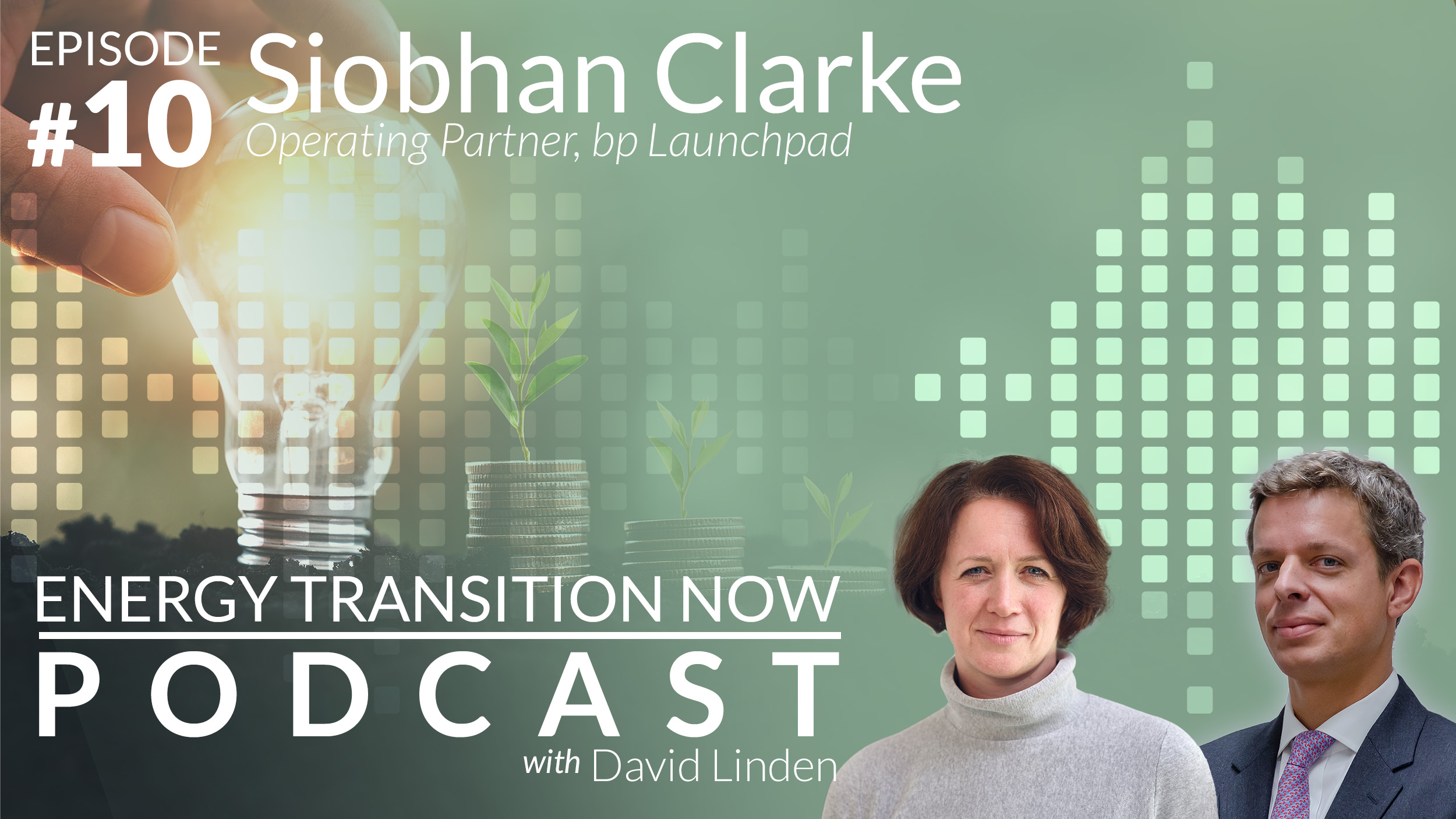
Siobhan Clarke
Operating Partner, bp Launchpad
EPISODE 11
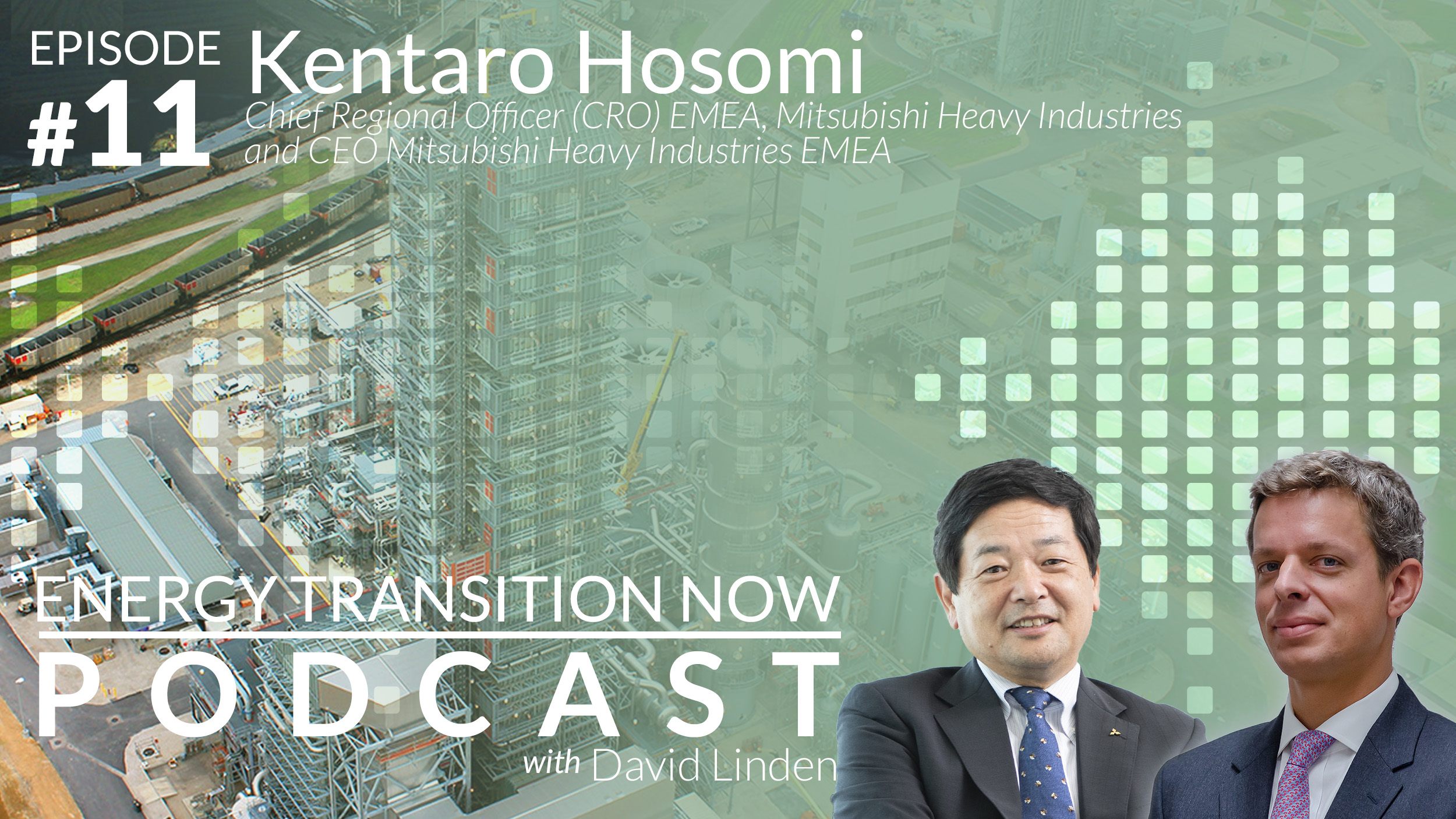
Kentaro Hosomi
Chief Regional Officer (CRO) EMEA, &
CEO Mitsubishi Heavy Industries EMEA
EPISODE 12
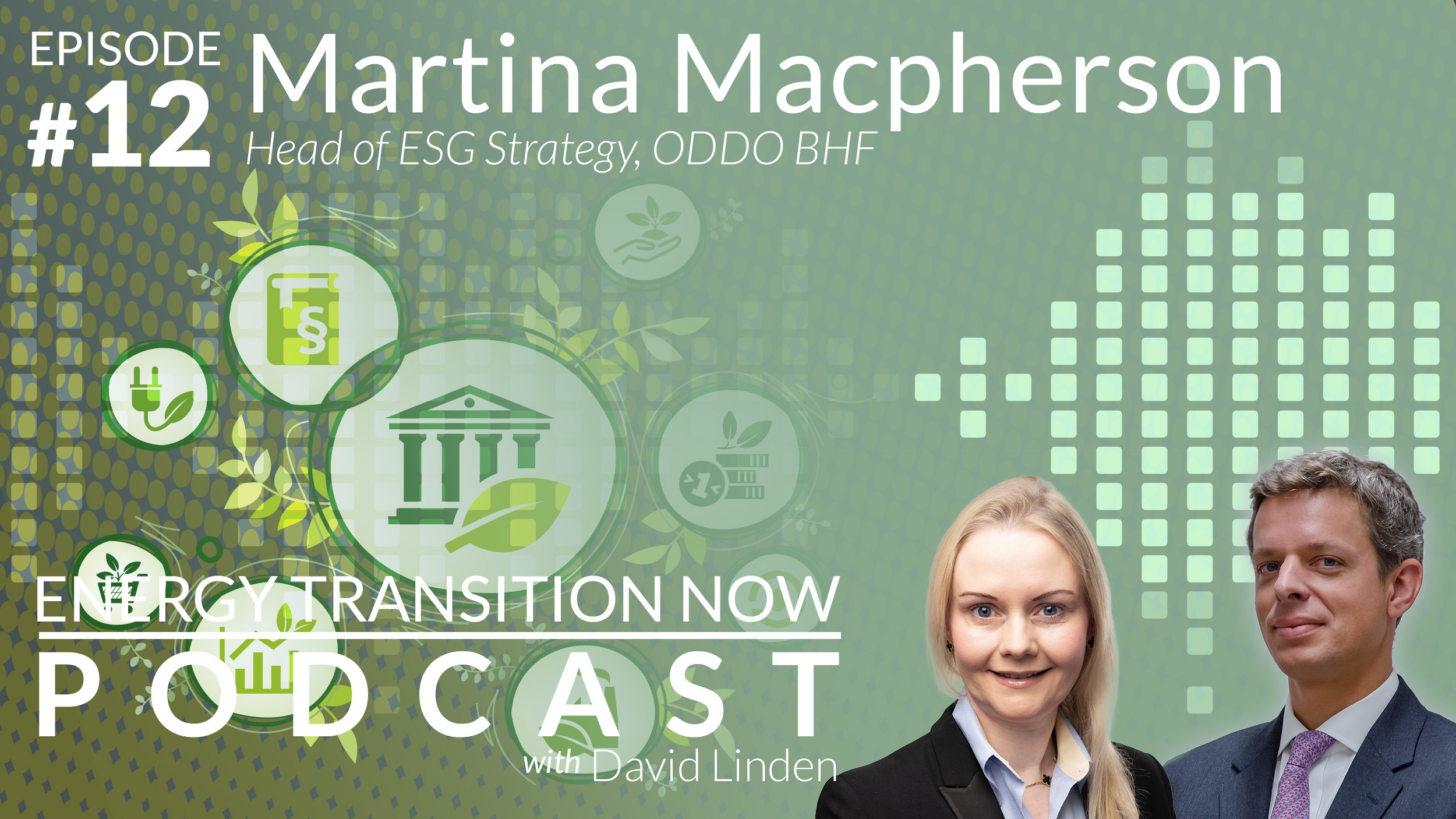
Martina Macpherson
Head of ESG Strategy, ODDO BHF


